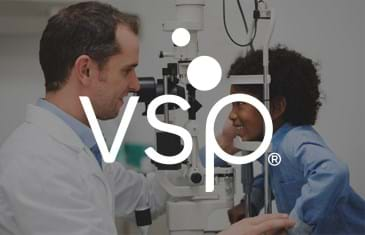Airband: Closing the digital divide in rural America
Millions of rural Americans—waiting for broadband internet
In a world where broadband is as essential as electricity, many Americans often take high-speed internet connectivity for granted. Jobs, schools, communication, transit, and other necessities depend on it, and new capabilities powered by cloud computing are driving economic growth and innovations that weren’t possible a decade ago.
Yet as recently as 2018, more than 19 million people living in the rural U.S.—especially communities in the South and the Midwest—didn’t have access to broadband internet. The result: millions of people left behind, making it harder for them to start a small business, succeed in school, modernize farms, and even access basic needs like healthcare. Without broadband, rural Americans and their communities struggle to keep pace.
Efforts to expand broadband service to rural areas had remained largely stagnant due to high costs, lack of new technologies, and market and regulatory conditions. Microsoft considered it a moral imperative to respond to this challenge with bold purpose.
The Microsoft Airband Initiative
Microsoft knew it had to get others on board to make progress. The work needed strong participation from internet service providers, hardware manufacturers, the Federal Communications Commission (FCC), and government officials at the city, state, and federal levels.
The company focused its efforts on a mixed-technology approach that included investment in TV white spaces, a low-cost form of fixed wireless connectivity that reduces the need to build out new infrastructure.
After laying the groundwork, Microsoft unveiled its approach to closing the broadband gap and delivering opportunity to rural America in July 2017—the Airband Initiative. The primary goal was aggressive: bring affordable broadband to 2 million people by 2022 and establish 12 projects in 12 states over the first 12 months. This was no simple launch event, and purpose-driven work rarely happens overnight.
Local storytelling to build national momentum
With an imperative to build awareness of the rural broadband gap and drive support for Microsoft’s approach toward closing it, we focused on winning the hearts and minds of people, both nationally and in the communities affected by this digital divide.
Our strategy was to earn broad national media coverage and generate a groundswell of support for the initiative based on local storytelling and local examples. In partnership with Microsoft, WE demonstrated the transformational potential of broadband in rural communities, particularly in the areas of agriculture, education, healthcare, and small-business opportunities.
Using Microsoft’s voice and platform, and those of its partners, these efforts built a groundswell of regional engagement, to support the unified call for greater public- and private- sector commitment to solving this critical issue.
Purpose-driven work starts with people
In partnership with Microsoft, we built a communications plan that reflected the breadth of Microsoft’s effort—a deep, far-reaching approach designed to connect across audiences and geographies:
-
The first part kicked off in May 2017, with a hyperlocal news conference in southern Virginia that put a real-world lens on the strain students face without internet connectivity at home. Microsoft previewed the “Homework Network,” highlighting how an innovative broadband partnership model could succeed in bridging the homework gap.
-
For the national launch in July, Microsoft President Brad Smith led the charge to engage policymakers at an event in Washington, D.C., strategically timed before a key FCC hearing to ensure maximum impact. WE also developed a microsite in partnership with Microsoft to educate people about Airband and Microsoft’s mission.
-
Together with Microsoft, WE kept the issue in the forefront of local, regional, and national reporters through a steady flow of community stories that emphasized the human impact of Airband. For example, the Teneyck family in Daft, Michigan, was among the first to get broadband service with download speeds 25 to 40 times faster than they had experienced before—a dramatic change for a family of four with two school-age children.
Closing the gap creates greater focus—and more opportunity
Eliminating the rural broadband gap is an ambitious goal, and nobody is better positioned to tackle it than Microsoft. We helped amplify the cause locally and nationally, deepening engagement with the issue and inspiring the kind of traction that leads to meaningful change.
Highlights from the initial 2017 launch include:
-
Positive signature stories with the New York Times, Wall Street Journal, Bloomberg, and USA Today set the tone and kicked off coverage. Reuters, The Washington Post, Politico, Fortune, Recode, and dozens more outlets reported from the event. Noteworthy syndicated stories from NPR and the Associated Press generated a strong second wave of coverage from coast to coast.
-
More than 1,292 story placements in local, regional, and national outlets.
After a year and a half of successful local drumbeat engagements, in December 2018, we supported a second national media moment with Microsoft President Brad Smith in Washington, D.C., where he shared the initiative’s progress and announced an expanded commitment to connect more Americans across the country within the original timeframe.
Following the second event, interest surged, and media coverage nearly doubled—again showing a strong mix of local, regional, and national storytelling:
-
Local news engagements, leading up to the December update, fueled 22 million social media impressions generated from 17,810 tweets—with 84 percent of the conversations occurring outside major metropolitan markets.
-
An in-depth, positive signature story in the New York Times, along with favorable advance pieces in several outlets, including Bloomberg, Quartz, VentureBeat, and CNET, shaped and drove significant coverage.
-
A total of 2,128 media placements ran in nearly every state across the U.S.
-
74 television and radio placements, including NPR and Fox Business, reached 188,417 viewers and 11.4 million weekly listeners.
Getting the right people—and the right partner—involved has helped bring national awareness to this initiative. And more importantly, it has opened up countless opportunities for millions of Americans.




